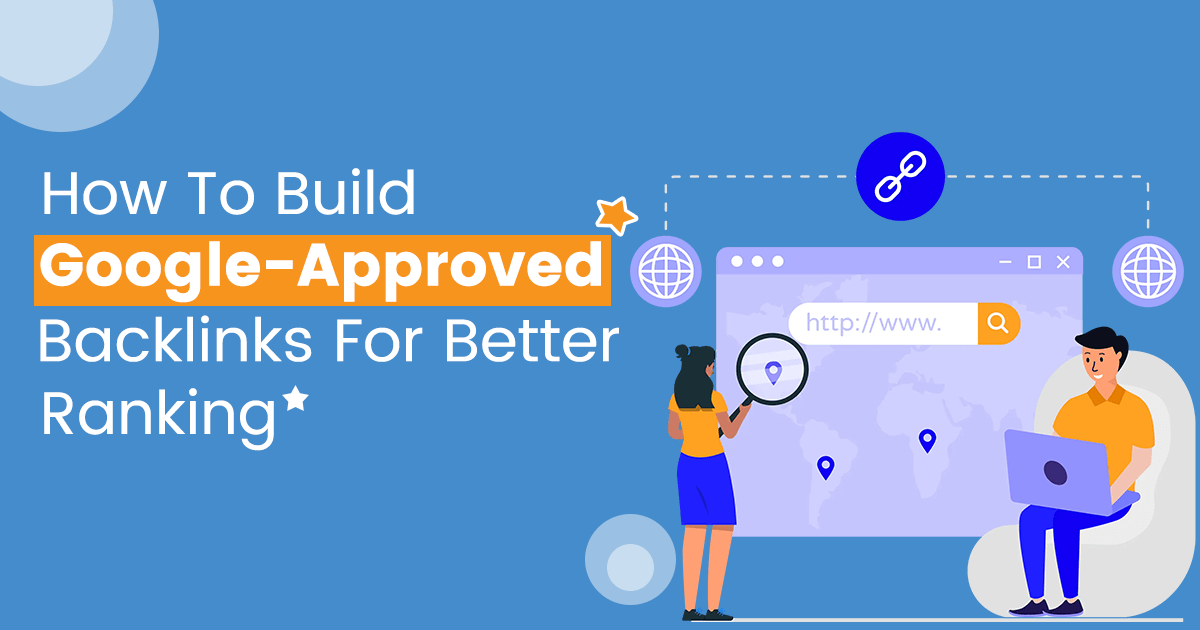How To Build Google-Approved Backlinks For Better Ranking
|
Getting your Trinity Audio player ready...
|
How To Build Google-Approved Backlinks For Better Ranking
Building Google-approved backlinks is essential for improving your website’s search engine ranking and driving organic traffic. However, it’s important to focus on ethical strategies that comply with Google’s guidelines to avoid penalties. Here’s a comprehensive guide on how to build Google-approved backlinks for better ranking.

1. Understand the Importance of Quality Over Quantity
One of the most common misconceptions about backlinks is that more is always better. However, Google prioritizes the quality of backlinks over quantity. A single link from a reputable, high-authority site can be more valuable than dozens of links from low-quality or spammy sites. High-quality backlinks come from sites that are relevant to your niche, have a strong domain authority, and are trusted by Google.
2. Create High-Quality, Shareable Content
Content is king, and creating valuable, shareable content is the foundation of a successful backlink strategy. High-quality content attracts natural backlinks because other websites want to link to valuable resources. Here are a few types of content that tend to earn backlinks:
- In-depth Guides and Tutorials: Comprehensive guides that offer real value are often linked by other websites as a reference.
- Infographics: Visually appealing and information-rich infographics are frequently shared across the web, earning you backlinks.
- Original Research and Data: Publishing original research, surveys, or case studies can position your site as a thought leader, leading others to cite your work.
- Listicles and Roundups: These types of posts are easy to digest and often attract links from other bloggers and content creators.
3. Leverage Guest Blogging
Guest blogging is a tried-and-true method of earning high-quality backlinks. The key is to write for reputable websites in your industry. Here’s how to do it effectively:
- Identify Relevant Blogs: Look for blogs that are related to your niche and have a good domain authority. Tools like Moz’s Domain Authority checker can help you with this.
- Pitch Unique Ideas: When pitching a guest post, offer unique, high-value topics that haven’t been covered extensively on the target blog.
- Include Natural Links: Within your guest post, include a link back to your site in a way that feels natural and adds value to the content.
4. Use Broken Link Building
Broken link building involves finding broken links on other websites and suggesting your own content as a replacement. It’s a win-win situation: the website owner gets to fix a broken link, and you earn a backlink. Here’s how to do it:
- Identify Broken Links: Use tools like Ahrefs or Check My Links to find broken links on websites within your niche.
- Create Replacement Content: Ensure you have relevant content that can serve as a replacement for the broken link.
- Reach Out to the Webmaster: Politely inform the webmaster about the broken link and suggest your content as a replacement. Personalizing your email increases the chances of success.
5. Engage in PR and Outreach
Public relations (PR) and outreach are essential for building high-authority backlinks. By getting mentioned in the media or on popular blogs, you can earn valuable backlinks. Here’s how to approach it:
- Press Releases: When you have something newsworthy to announce, such as a new product launch or a major milestone, send out a press release to relevant media outlets.
- HARO (Help a Reporter Out): Sign up for HARO, a service that connects journalists with expert sources. Responding to queries can get you featured in articles, earning you a backlink.
- Influencer Outreach: Build relationships with influencers in your industry. They can mention or link to your content on their blogs or social media platforms.
6. Optimize Internal Linking
While building external backlinks is crucial, don’t overlook the importance of internal linking. Internal links help distribute page authority across your site and improve the user experience by guiding visitors to relevant content. Here’s how to optimize internal linking:
- Use Descriptive Anchor Text: Instead of generic phrases like “click here,” use descriptive anchor text that includes relevant keywords.
- Link to High-Value Pages: Ensure that your most important pages, such as cornerstone content or high-converting landing pages, receive more internal links.
- Regularly Audit and Update Links: Periodically review your site to update or add new internal links as your content grows.
7. Participate in Industry Forums and Q&A Sites
Engaging in industry forums and Q&A sites like Quora or Reddit can help you build backlinks while establishing yourself as an authority. The key is to provide valuable, insightful answers rather than spamming links. Here’s how:
- Choose Relevant Forums: Participate in forums or communities that are closely related to your niche.
- Provide Value First: Focus on answering questions thoroughly and offering advice. If it’s appropriate, include a link to your site for further information.
- Follow Forum Guidelines: Ensure you adhere to the rules of each forum to avoid being flagged for spam.
8. Repurpose Content
Repurposing your existing content into different formats can open up new backlink opportunities. For instance, turn a blog post into a video, podcast, or infographic and share it on different platforms. This strategy not only extends the reach of your content but also attracts backlinks from a variety of sources.
9. Monitor Your Backlink Profile
Regularly monitoring your backlink profile is crucial to maintaining a healthy link strategy. Use tools like Google Search Console, Ahrefs, or SEMrush to keep track of who is linking to you. Here’s what to look for:
- Identify Toxic Links: If you notice spammy or irrelevant sites linking to you, consider disavowing these links through Google’s Disavow Tool to avoid penalties.
- Monitor Competitors: Analyze your competitors’ backlinks to identify new opportunities for your site.
10. Avoid Black Hat SEO Techniques
Finally, avoid black hat SEO techniques, such as buying backlinks or using private blog networks (PBNs). These methods might offer short-term gains but can lead to severe penalties from Google, ultimately harming your site’s ranking.
Building Google-approved backlinks is a strategic process that requires patience and consistent effort. By focusing on creating valuable content, leveraging guest blogging, engaging in outreach, and following ethical practices, you can build a strong backlink profile that improves your website’s ranking and visibility in search results. Remember, quality always trumps quantity, and building lasting relationships in your industry will yield the best long-term results.

 Previous Post
Previous Post Next Post
Next Post